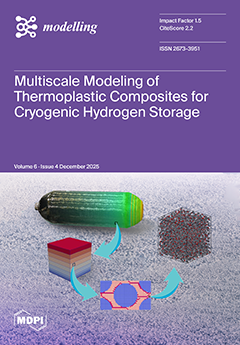The excellent thermal performance, quiet operation, and fuel flexibility of free-piston Stirling machines enable their broad application potential in sectors such as aerospace, distributed power generation, and industrial waste heat utilization. The impact of structural parameters on the output characteristics of the free-piston Stirling engine was investigated using a parametric MATLAB model based on an isothermal thermodynamic approach. Parameters such as the dead volume ratios (
χH,
χK,
χR), temperature ratio
τ, sweep volume ratio
k, piston phase angle
adr, and minimum pressure angle
θ were evaluated for their effects on the dimensionless power
Z. The results indicate that the dead volume ratio in the cold space
χK has the most significant influence on system performance, followed by the hot space
χH, while the regenerator
χR exhibits a comparatively weaker effect. All three parameters demonstrate the existence of optimal design intervals. The dimensionless power
Z decreases monotonically with increasing dead volume ratio. Moreover, this decline is intensified at higher temperature ratios
τ, indicating that the influence of dead volume becomes more significant under larger
τ values. The interaction between these parameters can be described by
. An excessively large sweep volume ratio
k tends to degrade the system’s output performance. An empirical correlation between
k and the dimensionless power can be established as follows
. A moderate increase in the piston phase angle
adr and a reduction in the minimum pressure angle
θ contribute to improved system performance by enlarging the
p-
v diagram area and enhancing the utilization of gas expansion. The relationship between
adr and the dimensionless power
Z follows a linear trend, expressed as
. A well-defined functional relationship exists between the minimum pressure angle
θ and the dimensionless power output
Z, which can be expressed as
. A coupling regulation mechanism and design strategy have been developed to facilitate the coordinated optimization of multiple parameters in free-piston Stirling engines, which delivers theoretical guidance that is expected to support the engineering implementation of next-generation, high-performance Stirling technologies.
Full article





